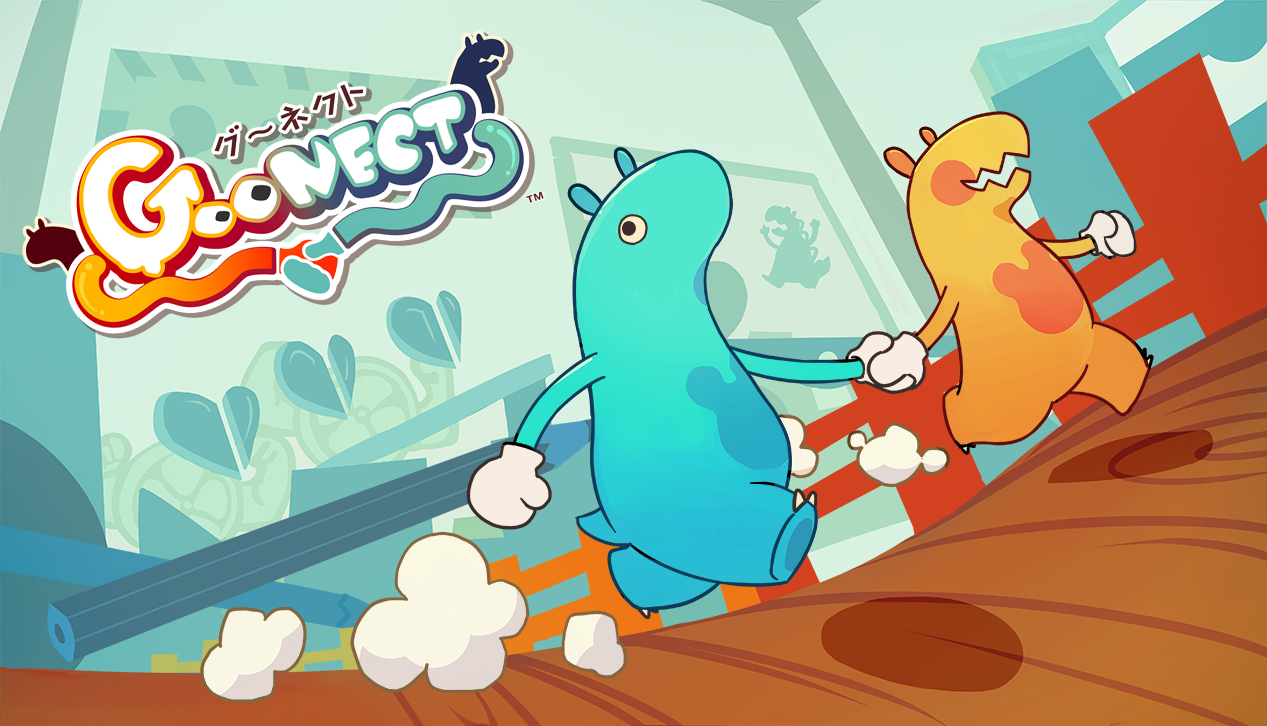
The new employee training at Bandai Namco Studios consists of hands-on learning where trainees team up with each other to create a game.
Goonect, a cooperative action game where two players join hands and help each other out as they go on an adventure, is a product of this training program that was released for free on Steam1 and received great feedback. This title demonstrates the support that the company offers, both in terms of instructing new hires so they can dive right into developing a game and assistance with procedures to release it.
We met members of the Goonect development team over Zoom and heard what they had to say about the new employee training at Bandai Namco Studios. (Meeting held in June 2022.)
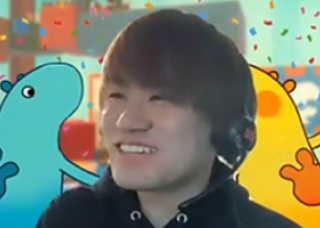
- Taiki Taniguchi
- Game Designer
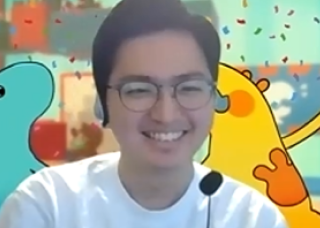
- Yojiro Hanawa
- Game Designer
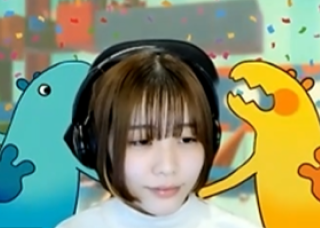
- Momoka Takada
- Game Designer
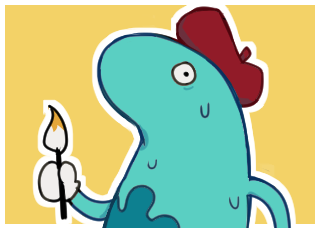
- Kanna Yokoyama
- Artist
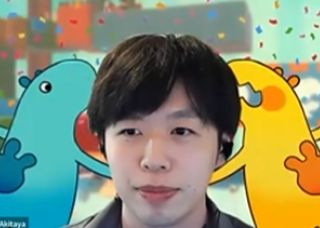
- Sho Akitaya
- Animator
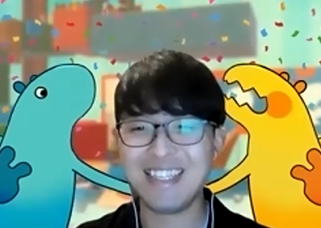
- Nobuyoshi Kobayashi
- Sound Creator
How much more generous can you get than paying participants in the new employee training to learn?!
――Nice to meet all of you. Could you please introduce yourselves by telling us your name, most recent educational background, and if you had any experience developing games before joining?
●Taniguchi: I’m a planner. I took on the role of director for Goonect. I came up with the initial proposal for the game and formulated its specifications. I went to a 4-year vocational school where I studied game development and had related experience before joining the company.
●Hanawa: I’m also a planner. I worked on project management, level design, mechanisms, and various other things. I graduated with a degree completely unrelated to games and had no game development experience at all before joining.
●Takada: I was in charge of the out-game elements, the UI, as well as part of the level designs. I went to a gaming vocational school and got experience developing a game as part of a team while I was there.
●Yokoyama: I’m a visual artist. It was my third year here so I wasn’t a new hire. I joined the project to fill an empty spot since they did not have enough people for my position. I worked on the character designs of the protagonists, 2D designs such as for assets and the UI, as well as the 3D models for the characters in Goonect. I majored in English at a regular four-year university that had nothing to do with games, so I joined the company with no experience in game creation. I am already assigned to a project which is still under development, so the first time I experienced the entire process of creating a game from start to finish all the way up to receiving user feedback is in Goonect.
●Akitaya: I’m an animator and I worked on anything and everything related to animating the characters. When I was in vocational school I worked in a team on CG videos that are about ten minutes long, but I joined the company without any knowledge about games.
●Kobayashi: I’m a sound creator and was in charge of the music, sound effects, the characters’ voices, and other audio-related aspects. I went to graduate school and did audio production for various small-scale movies, dramas, and animations. However, I had not worked on developing a game until I joined the company. This project was the first time I experienced working with looping music or sounds that change interactively the way they do in Goonect.
――Among the six members here, two of you have experience with game development, and two of you have gaming-related educational backgrounds. I see that many join Bandai Namco Studios with no experience in game development and come from unrelated backgrounds. Can you describe some unique characteristics and strengths of the Goonect team?
●Taniguchi: Hmm, I wonder what that would be?
●Hanawa: We were quite vocal at first, right?
●Taniguchi: We said, “We’re a very enthusiastic and fun team! Let’s go!” (laughs)
――Was the team eager and cohesive right from the start?
●Taniguchi: The new employee training itself was done remotely, so we weren’t like that right away. We all started out by just getting to know each other.
●Hanawa: Takada-san planned an online get-together and used a drawing game to break the ice. I feel like we all got much closer after that.
●Takada: Since we became a team, I thought it would be good to have a kick-off meeting, so I suggested that we have an online hangout. I think this came from my experience as a student with working in teams to create something as well as from managing an organization like a school club.
――Was there anything you were anxious about before joining the company?
●Taniguchi: When I think of developing a game, I think about a large team of people working together, with each team member’s work categorized into distinct areas by their job position. That made me feel uncertain because I did not know what specifically I would need to do as a planner.
●Hanawa: As for me, I had nothing but anxiety. I graduated from a major that had nothing to do with games and I didn’t know the first thing about development. Unlike Taniguchi-san, it’s like I didn’t even know what I should have been worried about (laughs). However, before we started the new employee training program there was specialized training for each job position, and in mine a senior planner taught me the basics. The support I received was so thorough that I wondered whether it was okay for me to get paid to participate, but I was able to pick up the basics thanks to it. The new employee training program that followed felt like the hands-on version. At that point, the mentors kept a good distance where they neither interfered nor abandoned us, and I felt very grateful for that. I remember having conversations with other newly hired planners and saying things like, “Getting paid to study feels like a bug in the system,” (laughs).
●Takada: We joined the company in the middle of the COVID-19 pandemic, so the usual process of meeting face to face and working on things together was not an option. Even after joining the company we worked fully remotely without meeting up with each other, and I was worried about whether we could keep up the enthusiasm as a production team. However, the team assignments for the new employee training were mostly free choice. The new planners would propose projects and we could request placement in the project we wanted to join. Everyone who joined the Goonect team genuinely wanted to work on it, and I think that’s why we were able to stay motivated even while working remotely.
●Kobayashi: I worked on video production while I was in school and had no experience developing games, so I had to learn about how to playback sounds in games from scratch. For example, the timing for sounds in computer games can change depending on the hardware’s specs, which is something that could never happen in video production. I had ideas, but was worried that I would not be able to properly get them across to members working in different job positions. However, thanks to various training sessions that offered curriculums that I would have paid money to take and opportunities to consult with the more experienced staff, I learned practical aspects of my job as well as how to communicate with those in other job positions. It’s all thanks to them that I could work on the development tasks during the new employee training practically stress-free.
Experienced mentors guide the new hires through their professional development
――Was there anything especially memorable out of all the advice you received from your mentors?
●Taniguchi: I vividly remember my mentor suggesting that I make the writing more impactful when I was working on the Goonect proposal. It didn’t really hit me at first, but they showed me some examples, and I realized how important wording could be in conveying ideas, even in internal proposals.
●Hanawa: There was a time when my mentor sat with me for three whole hours to give me guidance during the specialized training before the new employee training actually started. They looked at my proposal and gave me lots of advice after dissecting it and understanding its core and concept. The way of thinking that they taught me has proven useful even now when I’m working on the project I was assigned to after the training.
●Takada: We all brushed up the proposal that Taniguchi-san wrote as a part of working on Goonect. At that time, our mentor said to us, “an ideal proposal is something that has all of its readers imagining the same thing.” They taught us that because we present proposals to many people at once, it’s important to keep the reader in mind.
●Akitaya: Up until I worked on Goonect, I had only made CG animations for human characters. Since the characters in Goonect aren’t human, there was a time where I was obsessed with creating anatomically correct movements. However, I found out that even if the movements are loyal to how living beings move, as a character in a game, it wasn’t very interesting. Days went by where I was not satisfied with my work. It was then that a mentor told me that the movements I create are what makes the game fun; that accuracy is important, but what’s more important is that the character’s movements feel smooth when the user plays the game and that it’s visually appealing. That pointed me in the right direction and working on the movements got easier after that.
●Kobayashi: The sound creators in this company each have different characteristics, skills, and genres that they call their specialty. Their works are like puzzle pieces that come together to create audio. I’m personally interested in music production such as film and pop music, and I was not very knowledgeable in other specialized areas. During my training, a mentor who was skilled in sound effects told me, “Every sound has its own power. A single footstep can change the impression a character leaves, and a single sound effect could tell the players how the character is feeling.” They gave me a new perspective on sound, and I still cherish that advice to this day.
●Yokoyama: As I wasn’t a new hire, I didn’t have a mentor. Instead, I received advice from the experienced staff who coordinated the new employee training. For example, I learned how to draw concept art from a fellow concept artist who joined the company at the same time I was and was overseeing a different project. They helped me realize that concept art isn’t about creating artwork that you personally enjoy, but rather conveying the project’s concept, target audience, and its advantages.
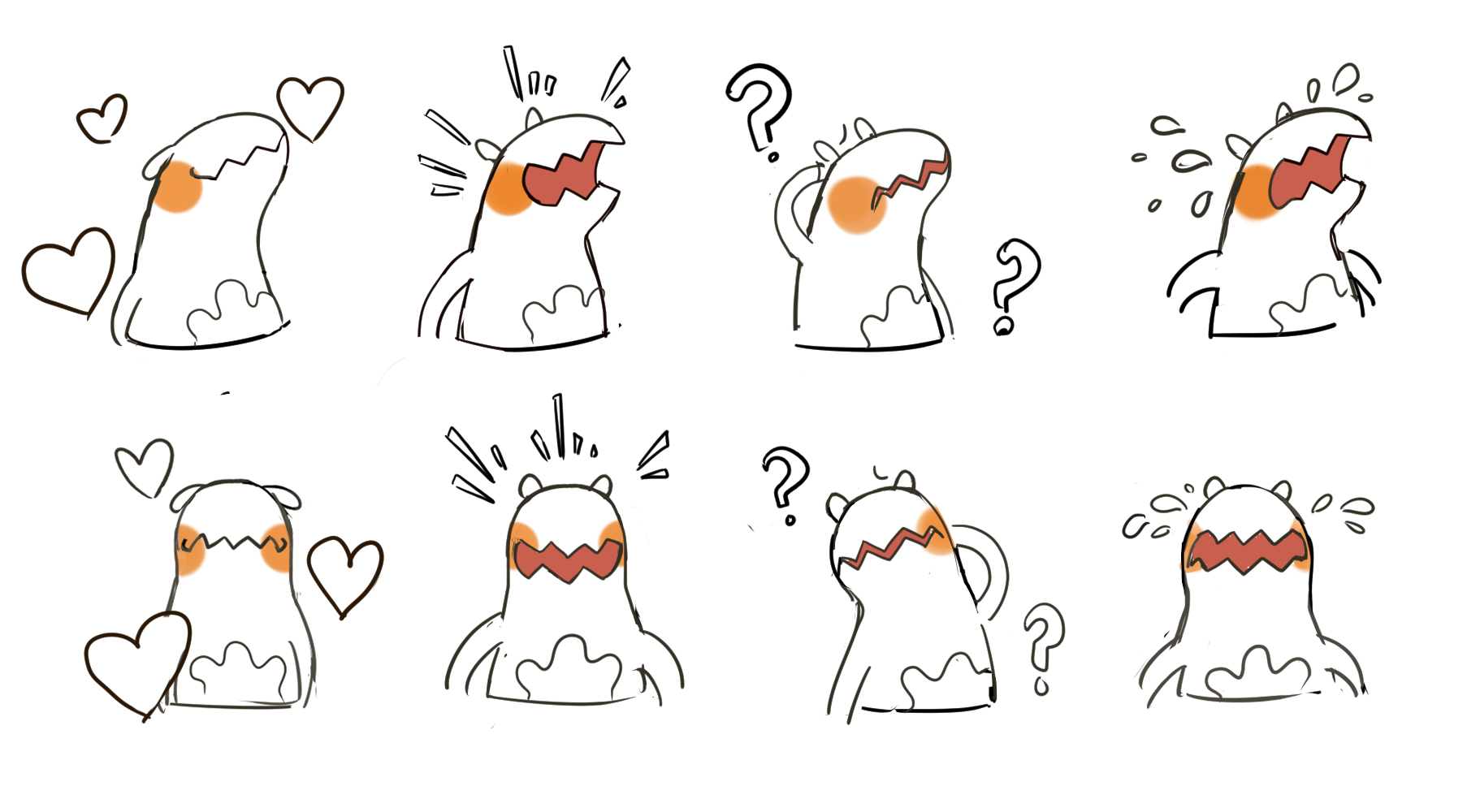
――Was there anything that you felt was different between creating something as an amateur before joining the company, and creating something as a professional at the company?
●Yokoyama: I became serious about my art quite late compared to most other artists. It was very difficult for me to find the balance between commercial-style illustrations that would represent the project, and artwork that retained the unconventional feel that is commonly found in indie projects. If I leaned too close to a commercial art style, the illustrations would neither properly embody the powerful aspects of this project nor be at all up to snuff.
●Akitaya: There were times when Taniguchi-san did not like something that I thought was good, or when we implemented something into the game and it did not turn out well. However, everyone on the Goonect team was very eager to give their input and feedback, and I think in that aspect I was very fortunate to work on a project with such a great team. Looking back on my work from when I was in school, I can now see that I was biased towards animating what I liked and realized that I was naïve for thinking that that was all I needed to do to make it (laughs).
●Hanawa: I had no experience working on games as an amateur, so when I joined the company, I thought of everything as purely for work. However, seeing everyone genuinely having fun with the project made me realize that I needed to not forget to have fun. In regular programming work, the deadline is the top priority and we generally shy away from incorporating new specs or ideas. However, there were times when things that engineers made that weren’t in the specifications were officially incorporated into the game. Things like this really made me enjoy how flexible and enthusiastic you get to be in game development, especially in the Goonect team.
●Taniguchi: Before joining the company, I had experience developing games as an amateur. At that time, my goals were just to have my friends play it or to present it externally on a small scale. During the new employee training, I became more and more aware that I am now getting paid to make games and need to make something truly fun so that the people who buy it will have a good time. From that point, I was uncertain about how I should change myself. The desire to create a fun game is the same regardless of whether you’re an amateur or a professional. However, as a professional, it would be irresponsible to your customers to put something out into the world that wasn’t solid, and you want to avoid leaving a negative impression on them. Changing my perspective let me learn how to see the various specs and ideas from the customer’s point of view and that became fun for me too.
New hires can also seize opportunities and grow as creators
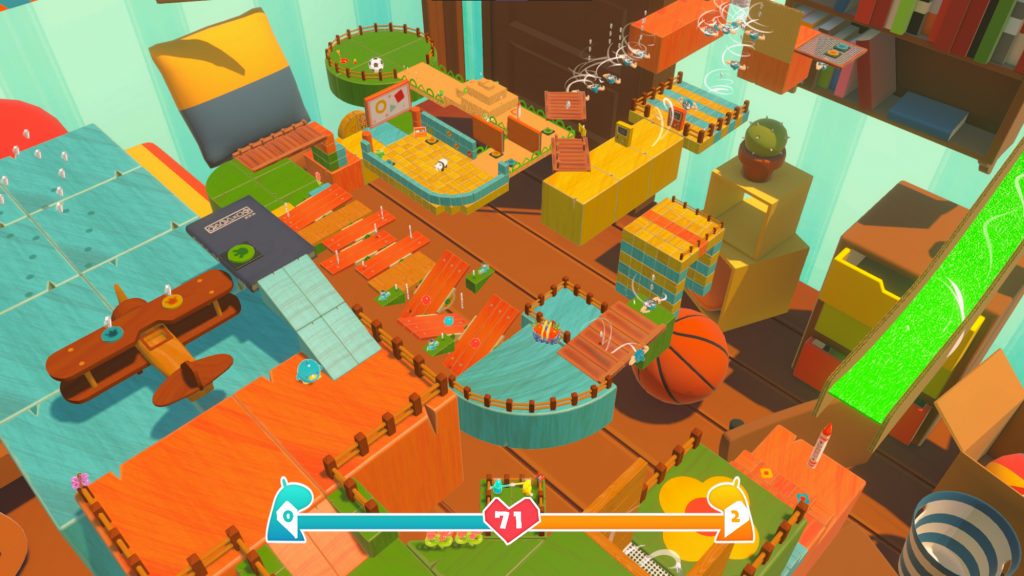
――Does anything stand out to you after releasing Goonect to the public and getting feedback from users?
●Taniguchi: Frankly, I’m very happy that we were able to put the game we worked on out into the world. Some of the reactions we got exceeded our expectations, too. Users said that they had a lot of fun with their friends or that they laughed a lot, which what was we aimed for with the Goonect project and that made me very proud.
●Hanawa: I personally thought that gamers, including myself, generally give very tough feedback, so I was very moved when we received a lot of praise after releasing the game. I remember that the team had very thorough discussions when we were planning the project about our goals for Goonect. Looking at the user reviews, we can see that they understood what we were going for, so I think we did a good job on that front. The people around me also played our game and the reality that we really released a game to the public hit me hard.
●Takada: We all got together around mid-day on the release date and searched for Goonect reviews. There were lots of positive reactions and even people who were waiting excitedly for the release, which made us very happy. After the release, I showed the game to my friends that I went to vocational school with and found out that they were already interested in the game! They were curious about it not because their friend made it, but because they genuinely thought it would be fun. That was very moving and made me proud.
●Kobayashi: I was very proud to see that there were many players who were humming along to the music on streams and such. When I saw that, I truly felt that my creations were leaving an impression on people. In this game, players go on adventures in levels featuring toys, sort of like a theme park. And you can’t have a theme park without fun music that you hum on the way home while thinking about all the fun things you did there. Therefore, while creating music for Goonect, I hoped that it can be a way for people to remember how much fun they had playing the game. Some users even said that they want the soundtrack, and that made me very happy.
●Akitaya: This might just be me, but the less comments there are about my work as an animator, the more satisfied I am. If the animation stands out too much, it gets in the way of the user’s immersion into the world of the game. And that’s even more true if the quality is not up to par. So when I watched people stream our game, I was very happy that no one said anything about the animation (laughs).
However, it’s a different story if the players get immersed in the action of the game. There’s a move called the hauling jump where one player hauls their partner up and sends them flying upwards while sparkling. I really enjoyed seeing surprised reactions and exclamations when players used this move about how far the character jumps.
As an animator, it’s very fulfilling to see players immersed in the action and enjoying the exhilarating movements in the game.
●Yokoyama: I also really love the animation that Akitaya-san created because it fits the characters so well (laughs). Honestly, a game I had a part in creating being released to the public feels like a dream. I was excited beyond belief to see my illustrations used for livestream thumbnails (laughs). Streamers worked very hard to mash up their artwork with mine, and it hit me hard that Goonect is actually seeing the light of day. I am so grateful.
――Last but not least, please say something to your future juniors and those who are considering applying for a job at Bandai Namco Studios!
●Taniguchi: This company gives plenty of opportunities even to new hires. I was able to live out my own dreams by experiencing being a director during my first year here and releasing a game I created. My advice is to play as many games as you can, research on what makes them interesting and fun, and build up your passion for creating a fun game. I believe that enthusiastic people are in demand and that those are the people who can seize these opportunities.
●Hanawa: I joined the company with no experience at all, so I’m still working on catching up to everyone else. However, the people here are very nice and patiently taught me what I need to know in order to get up to speed. I feel that game development is a very interesting field in itself and that it would be beneficial to not just our company but the industry as a whole if lots of people would give it a shot, including people who are apprehensive about doing so.
●Takada: I feel very comfortable at Bandai Namco Studios… Saying that might sound like I’m hiding some sort of malpractice, but I really do feel that way (laughs)! Taniguchi-san said that this is a company that gives us opportunities, and I think that we got these opportunities because we expressed our desires to create and sell games. Therefore, my advice is to find the courage to speak up and make yourself known.
●Kobayashi: I think it’s pretty rare to be able to work on audio for a project and also release the game during your first year. Recently, games are developed in larger scales and on longer timelines, so I think this experience alone is very appealing. Bandai Namco Studios handles a lot of the upper processes of production, so we are able to brainstorm with the planners about the sound direction and do lots of creative work. This company makes the most of its employees skills and specialties, making it perfect for the type of person who wants to master the craft they’re passionate about and take charge of their work.
●Akitaya: In my first year here, I realized how important it is to show people your work and get input from them. I find that aspiring designers, including myself, tend to obsess over perfecting our technical skills as well as focus too much on what we want to make and get tunnel vision. However, I believe that the more you show your work to others, the better it gets. Improving your skills is important as well, but I would encourage people to also get feedback on their work and be conscious about incorporating that feedback.
●Yokoyama: I started learning illustration later than others and have no experience with CG, so I didn’t even think that I would get hired at this company. When I got the job offer, I was equal parts happy and anxious. However, when the time came to start working here, all of the seniors were laid-back and provided very thorough support. I asked so many questions and they explained and taught me patiently even though they were also busy with their own work, and I was able to grow as a modeler and designer. Those who aspire for technical job positions tend to feel like they might not be good enough, but there are people like me out there too, so I think those who want to give it a shot definitely should do so.
――Thank you very much!
(Writer: Shiniti Yamoto)
Official website:
https: //store.steampowered.com/app/1850360/Goonect/
All company and product names mentioned herein are trademarks or registered trademarks of their respective companies.
1©2022 Valve Corporation. Steam and the Steam logo is a trademark or registered trademark of Valve Corporation in the United States and/or other countries.




